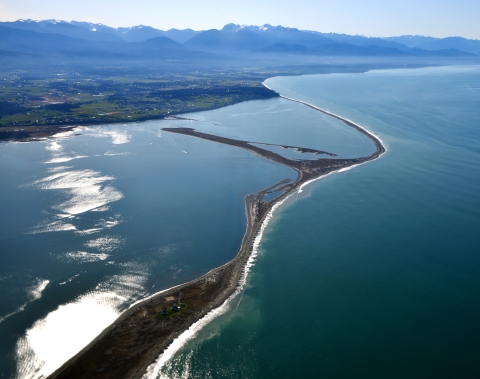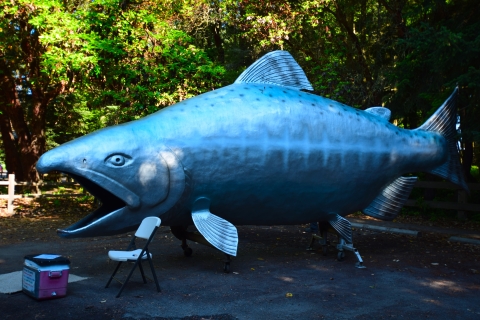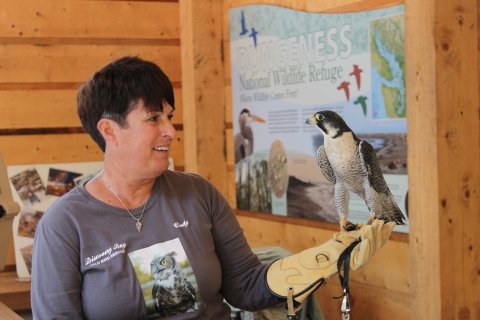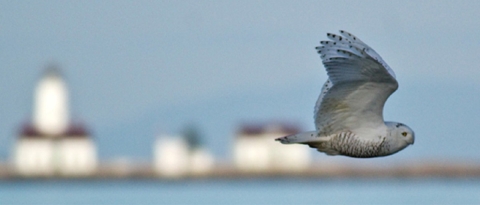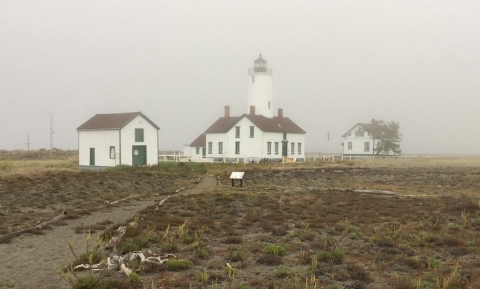Facility Activities
From the quiet rustling of towhees in the forest to the raucous crashing of waves on the shore, Dungeness provides numerous recreational opportunities for visitors. To protect sensitive plants and animals, parts of the Refuge are closed to visitation. Please consult the Refuge map before starting your adventure.
Wildlife Viewing
Bald eagles, brant, rough-skinned newts, harbor seals, and black oystercatchers - these are a few of the animals you may see on a thoughtful hike at Dungeness National Wildlife Refuge. By planning the timing of your trip carefully and being attentive to your surroundings, you may encounter a fascinating array of species.
Consult the Watchable Wildlife Checklist for advice on typical habitats and seasonal abundance of species at the Refuge.
Hiking
An easy half mile trail leads visitors through the forest to an overlook on the bluff above Dungeness Spit. The trail continues down a steep hill to the Spit and becomes a five mile walk to the lighthouse. Please stay on the designated trails.
Boating
Many people enjoy the challenge of visiting the New Dungeness Lighthouse at the end of Dungeness Spit by kayak. Others access shellfish beds by boat in Refuge waters. Be sure to consult tide tables and keep an eye on the weather as conditions can deteriorate quickly.
Download Boating Map (Cline Spit boat launch)
Fishing and Shellfishing
The Strait side of Dungeness Spit is open to saltwater fishing year-round, except for the area beyond the Lighthouse. Tidelands in Dungeness Bay and Harbor, excluding closed areas shown on the Refuge map, are open to shellfishing May 15 to September 30. Access east and west of Graveyard Spit is by boat only.
Washington State fishing regulations apply. All oysters are privately owned and may not be harvested.
Interpretation
Information panels are available at the entrance kiosk and along the main trail to the Spit. As you hike the trail through the forest you will be able to learn about the plants and animals that live here as well as the cultural history of the Spit.
Photography
Perhaps the fastest growing activity on national wildlife refuges in the past ten years has been wildlife photography. You don’t need to purchase expensive equipment or have any experience to get started. A small camera or basic cell phone will do just fine for most visitors. Wildlife photography is a high-priority activity in the Refuge System. We welcome beginning and expert photographers alike to record their outdoor adventures on film, memory card or internal hard drive.
Lighthouse Tours
Daily tours of the historic New Dungeness Lighthouse are offered by volunteers of the New Dungeness Light Station Association from 9:00 am to 5:00 pm. Winter hours vary.
- Educational Use Permits, Fee Waivers




